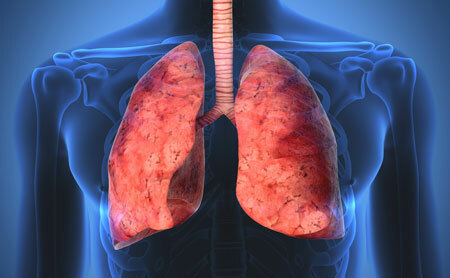Pneumonia is a group of lung infections of an infectious nature that are characterized by inflammatory changes in the alveoli and interstitial tissue.
Primary and secondary pneumonia are isolated. The first group includes pneumonia, which occurs in relatively healthy people due to hypothermia and other unfavorable factors.
Secondary pneumonia develops on the background of another pathology( chronic diseases, toxic effects, radiation damage, etc.).
Contents
- 1 What can cause pneumonia?
- 2 Signs of pneumonia in an adult
- 3 Methods of treating pneumonia - hospital and antibiotics?
- 4 Treatment of pneumonia at home
What can cause pneumonia?
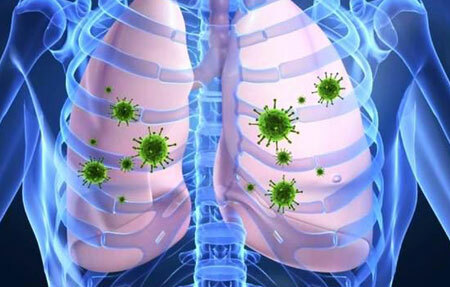
Before, the main causative agent of the disease was pneumococcus bacteria. Now other microorganisms play an important role in the development of pathology.
Depending on the cause of development, the following types of this disease are distinguished:
- Bacterial. They cause various types of pathogenic bacteria( pneumococci, staphylococcus, streptococcus, etc.).
- Viral. They are caused by adenoviruses, influenza and parainfluenza viruses and others.
- Parasitic.
- Fungal.
Predisposing factors to the development of this disease are:
- hypothermia;
- poor working and living conditions;
- chronic diseases of the upper respiratory tract;
- intoxication;
- traumatic injury, etc.
Signs of pneumonia in the adult
Symptoms and signs of the disease are determined by many factors: the type of pathogen, the prevalence of the pathological process, the presence of concomitant aggravating pathology.
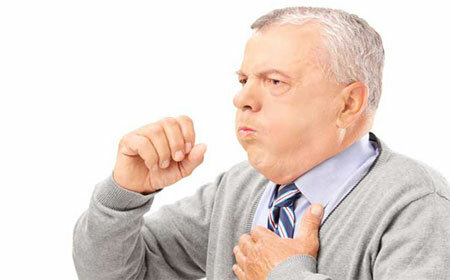
Signs of pneumonia in an adult, photo
The main complaints that bother the patient:
1. Pain in the chest. Pain sensations can be deep and shallow. The cause of superficial pain usually becomes intercostal neuralgia. This pain is increased by inhalation and by palpation of the chest.
Deep pains are caused by inflammation of the diaphragmatic nerves. This pain is very intense and gives to the abdomen.
2. Sputum. In the first days of a detachable one, there may not be. In the future, sputum appears: purulent, with an admixture of blood, foamy and other, depending on the type of pathogen and the prevalence of the lesion.
Sputum with putrefactive odor may indicate gangrene or lung abscess.
3. Cough. At the onset of the disease, the cough is dry, painful and permanent. With the appearance of sputum, it gradually disappears.
4. Dyspnea is a person's sensation that he does not have enough air for breathing. Appears after coughing or because of pain during breathing.
- More: Symptoms of pneumonia in children
In addition, the patient is concerned about the symptoms of general intoxication: fever, headaches, loss of appetite and others. In elderly people and persons with weak immunity, there may be a confusion of consciousness against the background of the disease.
Methods of treating pneumonia - hospital and antibiotics?
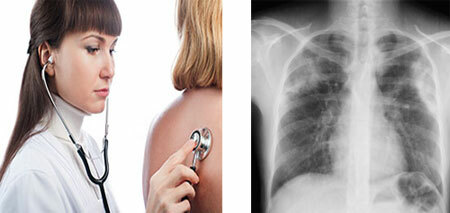
Treatment of pneumonia, in most cases, is performed in a hospital. This is especially true for patients with severe forms of the disease, increasing intoxication and signs of respiratory and heart failure.
Therapy is complex and includes:
- Bed rest and diet. During the period of fever, the patient is prescribed bed and drinking regimen, as well as a mechanically and thermally sparing diet.
- Treatment of pneumonia with antibiotics. Antibiotic therapy should begin as early as possible and under bacteriological control.
This means that before starting treatment for pneumonia in adults, one should take sputum for seeding to determine the type and sensitivity of the pathogen.

Use of mucolytics and antibiotics in the treatment of pneumonia
Therapy itself begins before the seeding result and its effectiveness is assessed clinically in 3-4 days. If during this time the antibiotic did not show its effect, it is changed to a drug of another group, taking into account the seeding data.
In most cases, antibiotics from the penicillin group and sulfonamides are used. A specific drug is chosen by the doctor who treats the patient.
- If the cause of pneumonia are viruses, then prescribe antiviral drugs in combination with drugs that stimulate immunity.
- Candidiasis pneumonia shows antimycotic drugs( Nystatin, Levorin, etc.).
- Mucolytics( ACS) and expectorants( thermopsis, marshmallow, etc.) are used to improve the cleansing of the bronchi.
- With a painful cough, antitussive drugs( codeine) are used.
- If under the influence of bacterial toxins develop allergic edema, use antihistamines or hormones.
- Physiotherapy( massage, ozocerite, UHF, etc.) and breathing exercises.
Important! Older people often develop stagnant pneumonia due to prolonged stay in bed. Treatment of pneumonia of this type in the elderly includes curative gymnastics in bed, breathing exercises and special massage. All these procedures are selected by a specialist and carried out under his supervision.
Treatment of pneumonia at home
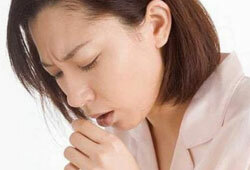 Treatment of pneumonia at home can be done with uncomplicated focal form, provided that the patient will comply with all requirements for regimen, diet and taking medications.
Treatment of pneumonia at home can be done with uncomplicated focal form, provided that the patient will comply with all requirements for regimen, diet and taking medications.
At home, the patient is given a separate room, dishes and linen. Regularly ventilate the room and spend wet cleaning. The regime in the early days of illness bed, then go to semi-domestic and home.
Food consists of a variety of dishes rich in vitamins and trace elements. In the period of fever recommend acidified drink, fruit drinks, compotes and mineral water. At the expressed intoxication in the first days, the patient can eat broths, compotes and vegetables.
The choice of the treatment regimen is made by the doctor who observes the patient. So, the standard treatment regimen includes:
- antibiotics taking into account the proposed pathogen;
- antipyretic and anti-inflammatory;
- expectorant;
- for pain - painkillers;
- mucolytics and expectorants.
Traditional medicine offers a variety of tinctures and decoctions that will help to withdraw phlegm from the lungs and strengthen the immune defense. For these purposes use: marshmallow, thermopsis, aloe, ginseng and other herbs.
- Read more: Symptoms and treatment of pneumonia in adults
In the recovery period, physiotherapy and massage are prescribed to improve blood supply to the lungs and activate breathing processes.
The choice of drugs and the way to treat pneumonia is determined by the patient's condition and the severity of this pathology. Uncomplicated pneumonia can be tried at home, but if necessary, you need to be ready to go to hospital to avoid complications.



